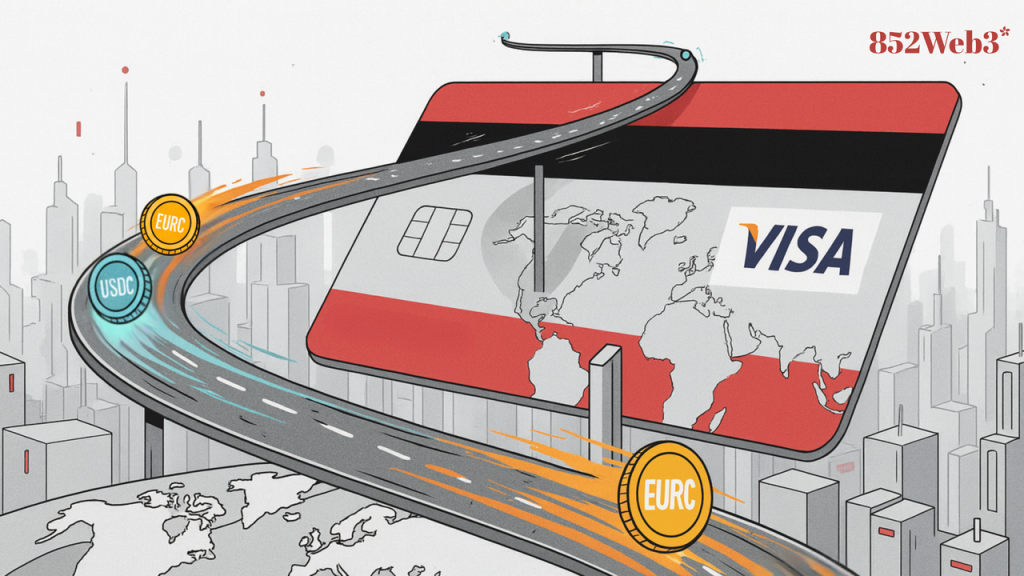Imagine topping up in USDC or EURC, and when it’s time to send money abroad, the funds move instantly across Visa’s rails. That’s exactly what Visa is testing with its new stablecoin prefunding pilot.
From Idle Cash to On-Chain Liquidity
Traditionally, companies handling cross-border payments had to lock up large amounts of fiat across different markets, waiting through weekends or holidays for clearing. This tied up capital and slowed business.
With Visa Direct’s new prefunding model, firms can pre-deposit stablecoins like USDC or EURC. Visa then treats that balance as “money in the bank”—instantly available when a payment needs to go out. On the receiving end, merchants and partners still get settled in local fiat. The blockchain sits in the background, invisible to end-users, but drastically improving liquidity.
Who’s in the Pilot
The program is aimed at banks, remittance providers, and financial institutions handling frequent cross-border payouts such as supplier settlements or payroll. USDC and EURC were chosen as the first test assets, focusing on USD and EUR corridors.
Visa says the pilot is partner-based for now, with broader expansion planned in the coming year.
Why Now?
🛡️ Regulatory clarity is part of the story. With the U.S. GENIUS Act providing a framework for stablecoins, traditional institutions are more willing to plug them into mainstream rails.
Rather than building a separate system, Visa is layering stablecoins on top of existing payment networks—as a liquidity and settlement booster, not a replacement. This means faster payments without rewriting the rules of global finance.
What It Means for Finance Teams
For CFOs and treasury managers, the benefits are straightforward:
-
Less idle capital: No need to maintain big pre-funded fiat balances in multiple markets.
-
Faster settlement: From days to minutes, across time zones and weekends.
-
Operational flexibility: Easier integration with ERP, payroll, and supplier systems.
The impact could be especially significant for cross-border e-commerce, SaaS exports, refund-heavy industries, and remittance platforms.
Ripples Beyond B2B
🌍 The experiment doesn’t stop at enterprises. In Asia, GCash in the Philippines now supports USDC in its GCrypto feature, and in Singapore, GrabPay merchants accept USDC/USDT via OKX Pay (converted into SGD at settlement). These integrations hint at how Web3 assets can quietly power Web2 payment experiences, expanding stablecoin utility from consumer wallets to enterprise liquidity pools.
Looking Ahead
Visa is positioning stablecoins as the next-generation float for cross-border payments. If the pilot proves successful, the next milestones will be:
-
Linking with real-time bank payment systems,
-
Expanding to more fiat corridors and stablecoins,
-
Ensuring network reliability and fee structures hold up at scale.
Stablecoins are moving from crypto exchanges into corporate treasury workflows - and Visa just gave them a direct highway into global payments.


